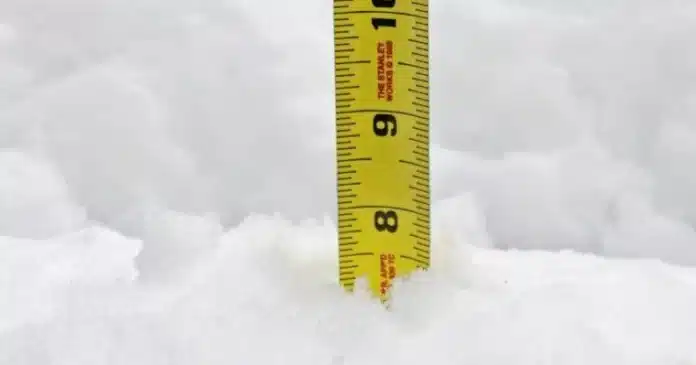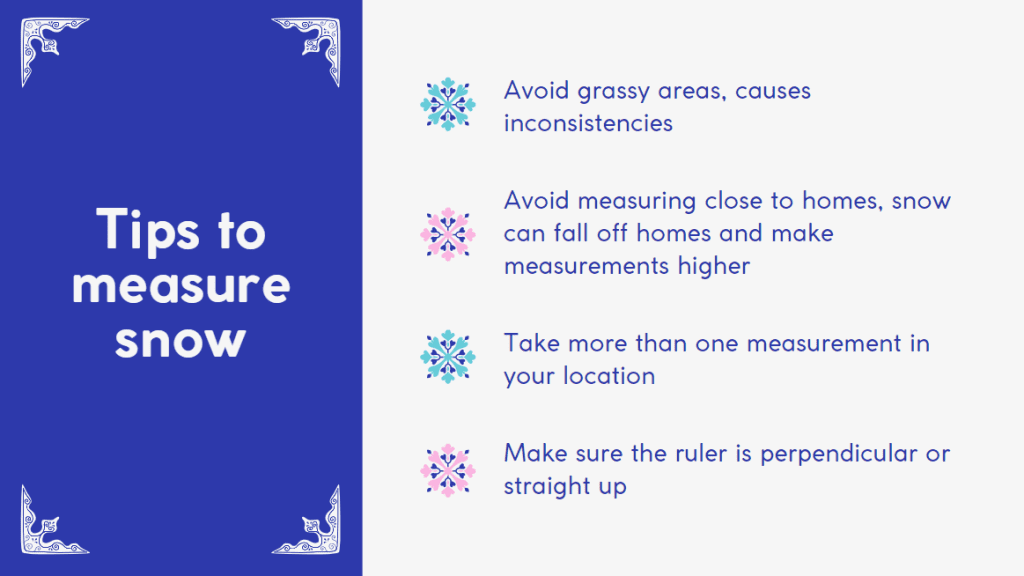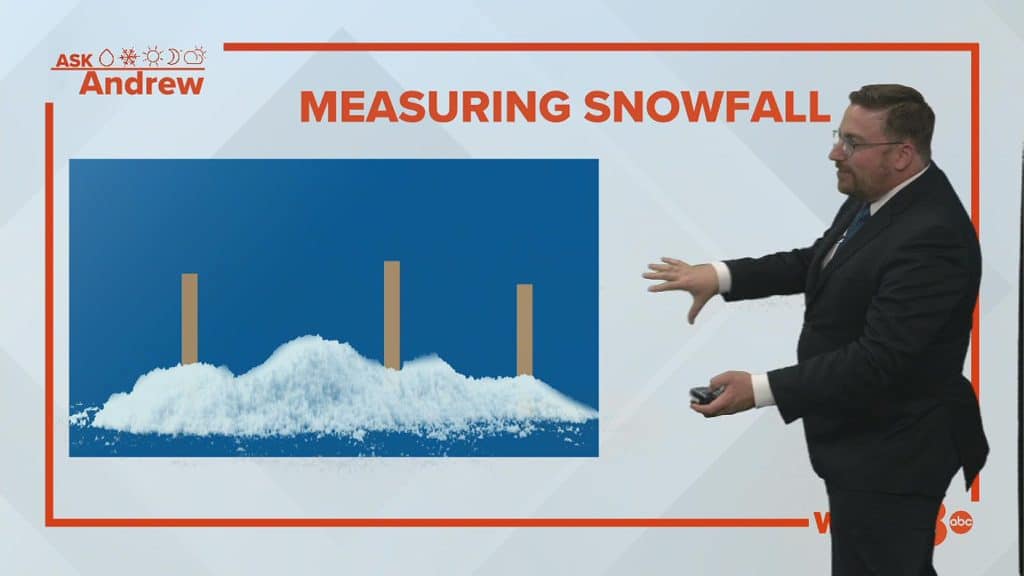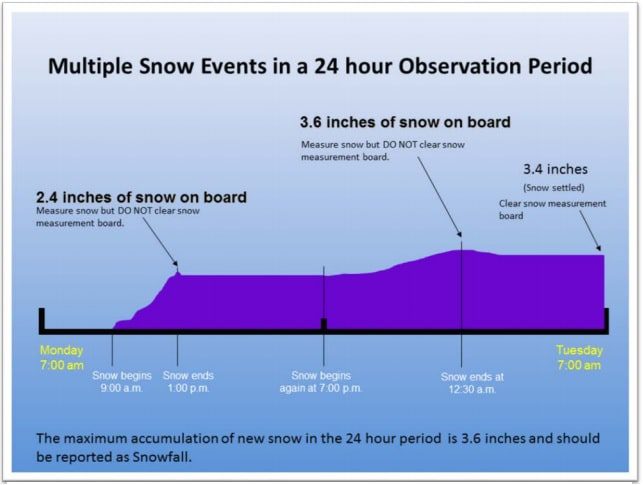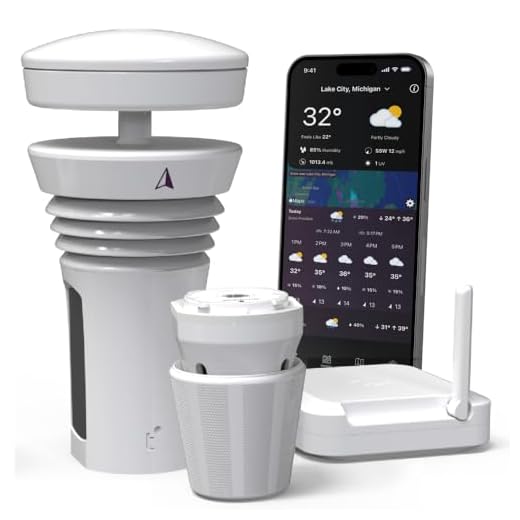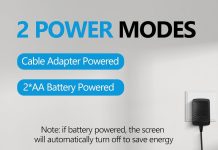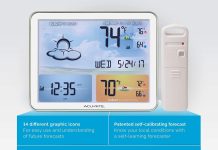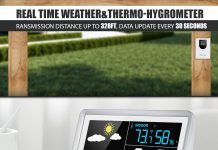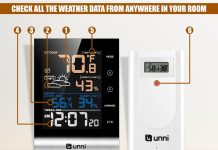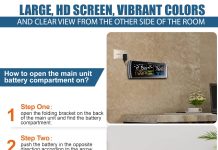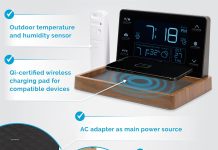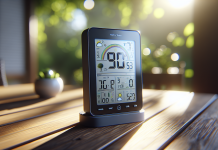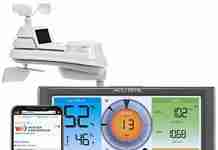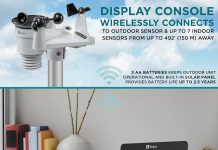You love the peaceful and beautiful sight of snowfall, but have you ever wondered how it is measured accurately?
In this article, discover the secrets behind measuring snowfall with precision. You will learn everything you need to know to become a snowfall measuring pro, from the tools to the techniques employed.
So, grab your mittens and get ready to uncover the fascinating world of accurately measuring snowfall!
Determining Snowfall Amounts
When measuring snowfall accurately, there are several methods and factors to consider. The key to obtaining precise measurements lies in using the right tools, understanding the various factors affecting snowfall measurement, and following proper techniques for accurate results.
In this comprehensive guide, we will explore different methods of snowfall measurement, factors that can impact measurements, and tips to ensure accurate measurements.
Using a Snow Gauge
A snow gauge is one of the most traditional and widely used methods for measuring snowfall. A snow gauge is a cylindrical container with clear markings indicating snow depth. To use a snow gauge, place it in an open, undisturbed area away from trees or buildings that can obstruct snowfall.
As snow accumulates in the gauge, it is essential to regularly check and record the measurements. Snow gauges are relatively inexpensive and can provide accurate measurements if used correctly.
Measuring Snow Depth
In addition to measuring snowfall amounts, knowing the depth of snow can be helpful for various purposes, such as assessing the impact on transportation or determining snow load on structures. Several methods exist to measure snow depth, from simple manual techniques to advanced digital tools.
One standard method is using a ruler or measuring stick. Insert the ruler or stick vertically into the snowpack until it reaches the ground level. Take note of the depth and repeat this process at multiple locations to account for any variations.
Another method involves using a measuring tape or string. Stretch the measuring tape or string across the snow-covered area and measure the depth at various points. Add up the measurements and calculate the average to obtain the snow depth.
For more accurate and efficient measurements, snow depth sensors can be utilized. These devices are designed to directly measure snow depth by deploying sensors that penetrate the snowpack. They provide real-time data and can be helpful in research or monitoring applications.
Using Digital Snow Measurement Tools
Digital snow measurement tools have become increasingly popular due to their convenience and accuracy. These tools utilize advanced technology to measure snowfall and provide precise data.
One such tool is a snow scale or weighing platform. It works by weighing the snow onto a platform, providing accurate real-time measurements. Snowfall imaging devices are another digital tool that uses optical technology to capture images of snowfall patterns and calculate the amount of snow based on image analysis.
Mobile apps dedicated to snow measurement have also emerged, offering a user-friendly and accessible way to measure snowfall. These apps utilize various techniques, such as image recognition or GPS tracking, to calculate snow depth and accumulation.
They often provide additional features like data logging and sharing options, making them popular among outdoor enthusiasts and researchers.
Factors Affecting Snowfall Measurement
Several factors can significantly affect the accuracy of snowfall measurements. It is essential to understand these factors and consider them when measuring snowfall.
The most common factors impacting measurements include wind drift, compaction, partial melting, and snowfall variability.
Wind Drift
Wind can cause snow displacement, resulting in uneven distribution and inaccurate measurements.
When strong winds blow during a snowfall event, it can lead to snow accumulation in one area while leaving other areas relatively straightforward. This can make it challenging to represent the overall snowfall accurately.
Moreover, wind can cause snow to drift into obstacles such as trees or buildings, further distorting measurements. Knowing wind direction and compensating for wind drift when measuring snowfall is essential.
Compaction
Snow can undergo compaction, which involves the compression of snowflakes into denser layers. This can occur due to temperature changes, the weight of additional snowfall, or human activities like walking or shoveling.
Compacted snow can give the illusion of greater depth when measured, leading to overestimating snowfall amounts. To ensure accurate measurements, it is crucial to consider the level of compaction and make adjustments accordingly.
Partial Melting
The temperature can fluctuate during a snowfall, causing partial melting of snowflakes. This partial melting can lead to the formation of ice crusts or packed snow, which can affect measurements.
Identifying and accounting for any partial melting that might have occurred when measuring snowfall amounts is essential. This can be particularly challenging in areas with frequent temperature variations.
Snowfall Variability
Snowfall is rarely uniform across a given area, especially during heavy or precipitation events. Snowfall can vary in intensity, resulting in areas with different accumulation rates.
Additionally, factors like topography and microclimates can impact snowfall patterns. Considering these variations and taking multiple measurements at several locations is essential to understanding snowfall accumulations comprehensively.
Preparing for Snowfall Measurement
Before measuring snowfall, it is essential to make the necessary preparations to ensure accurate and reliable measurements. Two key factors are obtaining the right tools and selecting an ideal measuring area.
Obtaining the Right Tools
Having the appropriate tools is crucial for obtaining accurate snowfall measurements. Depending on the method chosen, ensure you have the necessary equipment, such as snow gauges, rulers, measuring tapes, snow depth sensors, or digital measurement tools. Investing in high-quality tools designed explicitly for snow measurement is essential to ensure accurate results.
Selecting an Ideal Measuring Area
When selecting an area for snowfall measurement, it is essential to choose a location that is open and free from obstructions. Look for an area away from trees, buildings, or other structures that can cause the accumulation or drift of snow.
A clear, undisturbed area will provide more accurate measurements. If possible, choose an area that represents the overall conditions in the surrounding region rather than a localized spot with different snowfall patterns.
Different Snow Measurement Methods
Various methods can be employed to measure snowfall accurately. These methods range from traditional manual techniques to automated systems and remote sensing technologies. Understanding the different snow measurement methods can help select the most suitable approach for specific needs and applications.
Traditional Manual Methods
Traditional manual methods involve physically measuring the depth or amount of snow using tools such as gauges, rulers, or measuring sticks. These simple methods require significant effort and time to obtain comprehensive measurements. They are often used for personal or small-scale measurements.
Automated Snow Measurement Systems
Automated snow measurement systems facilitate the continuous and automatic measurement of snowfall and snow depth. These systems typically utilize sensors or instruments that capture data in real time. They provide accurate and reliable measurements with minimal human intervention, making them suitable for scientific research or large-scale measurements.
Remote Sensing Technologies
Remote sensing technologies, such as satellites or radar systems, offer a unique perspective for snowfall measurement. These technologies provide wide-area coverage and can capture data on snowfall amounts and patterns over large regions. Remote sensing is particularly useful for monitoring and studying snowfall on a regional or global scale.
Tips for Accurate Snowfall Measurement
To ensure accurate snowfall measurements, here are a few essential tips to follow:
Avoiding Obstructions
Choose a measuring area free from obstructions, such as trees, buildings, or other structures that can interfere with snowfall accumulation. These obstructions can cause uneven distribution and inaccurate measurements.
Ensuring Proper Technique
Use the correct measurement technique according to the chosen method. Follow established guidelines and ensure proper handling of the tools to obtain accurate measurements. Pay attention to details such as the vertical positioning of rulers or gauges, the proper calibration of digital tools, and the correct interpretation of data from automated systems.
Taking Multiple Measurements
To account for snowfall variability and understand snow accumulation comprehensively, take multiple measurements at various locations within the selected area. This will help mitigate localized variations and provide a more accurate representation of the overall snowfall.
Recording Snowfall Variability
Note any observed variations or anomalies in the snowfall pattern or accumulation. This information can be valuable for future reference, comparisons, or analysis. Recording snowfall variability can provide insights into local conditions and help identify factors that might have influenced the measurements.
Using a Snow Gauge
A snow gauge is a reliable and widely used tool for measuring snowfall. To effectively use a snow gauge, follow these steps:
Selecting the Right Gauge
Choose a snow gauge appropriate for the desired level of accuracy and the specific conditions in your area. Different gauges are available, ranging from essential cylindrical containers with markings to more advanced models with additional features like windshields or automated data logging.
Proper Placement of the Gauge
Place the snow gauge in an open area away from obstructions and a location representing the overall snowfall in the surrounding region. If possible, avoid placing the gauge directly on the ground, which can lead to inaccurate measurements due to ground-level snow accumulation. Instead, elevate the gauge slightly above the ground using a stand or platform.
Reading and Recording the Measurements
Regularly check the snow gauge and record the measurements at predetermined intervals. Make sure to read the measurements from eye level and avoid parallax errors.
Carefully record the depth or amount of snowfall, ideally using a logbook or digital recording device. Be consistent and accurate in recording the data, as this information will be helpful for analysis, comparisons, or future reference.
Measuring Snow Depth
Knowing snow depth is essential for various applications, from assessing winter hazards to determining snow load on structures. Here are several methods for measuring snow depth:
Using a Ruler or Measuring Stick
Insert a ruler or measuring stick vertically into the snowpack until it touches the ground level. Take note of the depth and repeat this process at multiple locations within the designated measuring area. Average the measurements to obtain the snow depth.
Using a Measuring Tape or String
Stretch a measuring tape or string across the snow-covered area and measure the depth at several points. Sum up the measurements and calculate the average to determine the snow depth. This method provides a more comprehensive representation of the overall snow depth.
Using a Snow Depth Sensor
Snow depth sensors are advanced tools that directly measure snow depth by deploying sensors into the snowpack. These sensors provide real-time data and can be particularly useful for research or monitoring purposes. Follow the manufacturer’s instructions for the correct placement and usage of the snow depth sensor.
Wind Drift
Wind can significantly influence snowfall measurement, leading to erroneous readings. When measuring snowfall in an area prone to wind drift, there are a few considerations to remember.
Understanding Wind’s Influence on Snowfall
Wind can cause the displacement of snow particles, resulting in uneven distribution and accumulation. The snow drifting away can lead to underestimating snowfall amounts, while the accumulation can cause overestimation. Understanding the direction and intensity of wind during a snowfall event is essential for obtaining accurate measurements.
Compensating for Wind Drift When Measuring Snow
To compensate for wind drift when measuring snow, it is recommended to take multiple measurements at various locations within the designated area.
This helps mitigate the localized effects of wind and provides a more representative snowfall measurement. Additionally, consider the direction of the prevailing wind and make note of any observed drift patterns. More accurate snowfall measurements can be obtained by being aware of wind drift and adequately accounting for it.
Deploying Mobile Apps for Snow Measurement
In the digital age, mobile apps have emerged as convenient tools for snow measurement. These apps utilize various features and functions to provide accurate measurements and additional benefits. Here is an overview of snow measurement apps and the features they offer:
Overview of Snow Measurement Apps
Snow measurement apps are designed to help users accurately measure snowfall and obtain real-time data. They often use innovative techniques such as image recognition, GPS tracking, or voice commands. These apps provide a user-friendly interface and can be used by individuals, professionals, or researchers.
Features and Functions of Popular Apps
Popular snow measurement apps offer a range of features and functions to enhance the snow measurement experience.
They often include data logging and sharing options, historical data analysis, and automatic notifications for weather alerts or snowfall predictions. Some apps also provide additional information and resources related to snowfall, such as safety tips or snow-related activities.
In conclusion, accurately measuring snowfall is essential for various purposes, ranging from safety assessments to research studies. Accurate snowfall measurements can be obtained using the appropriate tools and techniques, accounting for factors affecting measurements and using digital advancements.
Whether using traditional manual methods, automated systems, or remote sensing technologies, following the tips and guidelines outlined in this comprehensive guide will help ensure accurate and reliable snowfall measurements.
Are you curious about accurately measuring snowfall? If so, then this article is for you.
Knowing how much snow has fallen can help with various tasks and hobbies – like forecasting the weather or determining whether it’s time to break out your skis!
Here, we’ll discuss tried-and-true methods of measuring snowfall that will give you an accurate estimate every time. So, let’s dive right in and learn how to measure snowfall accurately.
Accurate measurement starts by understanding what instruments best suit the task at hand.
For example, using a ruler might be your best bet if you’re looking for precision measurements down to hundredths of an inch.
But if all you need is a ballpark figure on the amount of snow accumulated over several days, something less precise may do the trick.
Finally, one should follow some general guidelines when taking any measurement: ensure that whatever instrument you use is adequately calibrated; consider any wind factor (which could blow away light flurries); and double-check your results before recording them. With these tips in mind, let’s explore further how to measure snowfall accurately.
Definition: Measure Snowfall Accurately
Snowfall is the amount of snow accumulating on surfaces over a certain period. Measuring it accurately requires precision and attention to detail.
There are several ways to measure snowfall, including manual measurements with instruments such as rulers and yardsticks, devices like rain gauges or snowboards, and even satellite imaging technology.
Each method has its advantages and disadvantages. Manual measurements require more effort but can be done in any location; devices have greater accuracy but must be set up correctly; satellite imagery offers a wide range of data points but may not provide granular information.
Factors To Consider
Now that you know what snowfall is and how it’s measured, let’s talk about the factors to consider when measuring snowfall accurately. First, you’ll need an accurate weather instrument, such as a rain gauge or a ruler, to accurately measure the amount of snowfall.
The type of instrument used will depend on the size and shape of the object being measured. For example, if you’re trying to measure more significant amounts of snow accumulations, you may want to use a ruler or yardstick instead of a rain gauge.
It’s also important to note that temperature plays a role in determining accurate measurements for snowfall. Snowflakes are more likely to form below freezing, so it’s necessary to ensure that your measurement is taken during colder temperatures for accuracy.
Taking multiple readings at different times can help give more accurate results. Additionally, please consider any wind speeds that could affect the measurement by blowing away some flakes before they have been recorded.
Following these steps, you can quickly get reliable estimates of actual precipitation levels from your measurements.
Weather Station Instruments
Weather stations use various instruments to measure and record snowfall. The most common instrument used is a precipitation gauge, which measures the amount of liquid water that has fallen from clouds in the form of rain or melted snow.
This information can be converted into estimating how much snow has fallen by considering the temperature at the measurement time. Other instruments used include weather balloons, radar systems, and satellite imagery.
Snow depth measurements are also crucial for monitoring winter storms. A reference stake is typically installed near a weather station to provide an anchor point for measuring changes in snow depth over time.
In addition, ultrasonic sensors are often deployed on towers to measure the height of falling or drifting snow as it accumulates around these structures.
Data from these sensors can then be combined with other sources, such as aerial photography or ground-based observations, to calculate total accumulation during a storm event.
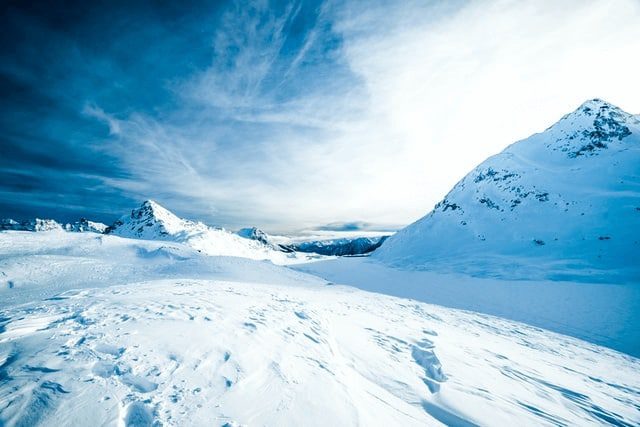
Snow Pillows And Weighing Gauges
Snow Pillows are a highly accurate method to measure snowfall. This gauge type comprises two layers, forming an air pocket between them.
The top layer is the catchment surface and collects the snow, while the bottom layer serves as a container for any melted water. Snow accumulates on the upper surface until enough pressure builds up inside the pillow, triggering a weighing system and recording how much snow has been caught.
Weighing gauges can also accurately measure snowfall by collecting data from digital scales underneath the device. These scales detect changes in weight due to precipitation and send readings directly to a weather station or other computing device.
Both methods require regular maintenance and calibration to ensure accuracy but provide reliable data over long periods with minimal effort from personnel at site locations.
Recording Snowfall Data
Once you have your snow pillow or weighing gauge in place, it’s time to start recording the data. Firstly, record how much snowfall has accumulated over a certain period.
It may be helpful to check at least twice daily if possible – once early in the morning and then again later in the afternoon/evening.
This will give you an average for each day’s accumulation. Secondly, note any changes throughout the day – such as melting or drifting snow from windy conditions. When reviewing your data, these can affect readings, so they should be considered.
Lastly, ensure to periodically clean off the device and reset it after significant storms. This could cause inaccurate readings due to clumping or sticking of wet, heavy snow between measuring intervals.
This way, you’ll get accurate measurements every time and ensure you capture all the relevant data points needed to analyze your results effectively.
Manual Measurement Techniques
Manual measurement techniques are one of the most reliable ways to measure snowfall. To get an accurate reading, you must use a ruler or measuring stick with markings that indicate inches and centimeters.
When it’s time to take measurements, find an area where snow is consistent in depth and flat enough for easy access.
Place your measuring stick into the snow at least 10cm deep and make sure all sides remain visible while being measured.
Record the number on top of the snow before removing the stick – this ensures you have captured any additional flakes that may have fallen since you last inserted the measuring stick. Once you’ve taken your readings, add them together, then divide them by two to get your average snowfall amount for that particular location.
Record your findings accurately to be used as reference data for future readings.
Electronic Measuring Devices
Electronic measuring devices are used to measure snowfall accurately. These devices use various methods, such as laser beams or heated probes, to measure the amount of snow in an area over time.
Some systems can be installed into the ground and connected to computers for more accurate readings. The most accurate method is to place several electronic measuring devices around an area at different heights and angles so that it’s possible to get detailed readings from all parts of the region.
This allows for much more accurate measurements than if only one device was used alone. With these devices, environmental factors like wind speed and temperature can also be considered when calculating total snowfall amounts.
Overall, electronic measuring devices offer reliable results and are the best way to ensure accuracy when measuring snowfall levels.
Remote Sensing And GIS Technology
Building on the information in the previous section about electronic measuring devices, remote Sensing and GIS technology are two more ways to measure snowfall accurately. Remote Sensing is a technique used to gather data from a distance.
It can be done with satellites or airplanes that collect images of the surface of Earth.
These images provide valuable information regarding precipitation patterns and meteorological events, such as snow accumulation.
GIS (Geographic Information Systems) Technology is also vital in assessing weather conditions and predicting snowfall totals.
This requires specialized software and hardware systems that store, analyze, integrate, manipulate, and manage geographic data to produce maps showing areas affected by winter storms, like blizzards or heavy snowfalls.
The information gathered through this process helps scientists better understand what triggers certain weather phenomena and how they affect different parts of the world.
With these powerful tools, researchers have developed increasingly accurate models for forecasting future weather trends related to snowfall amounts.
Non-Standard Equipment
If you don’t have access to traditional weather-monitoring equipment, there are still ways to measure snowfall accurately. For instance, a ruler or measuring tape can be used alongside a flat surface such as cardboard, paper, or even the ground to measure the amount of snow that has fallen.
This method is effective for areas where it snows regularly and requires no special instruments or technical knowledge. Additionally, if one wishes to approximate how much snow has fallen over a large area like a field or park, one could use a ‘snowboard.’
A snowboard consists of two boards connected with rope and nails; when placed on top of the snow, it forms a V shape, allowing for easy comparison with other sections to determine the accumulation level over time. Both methods offer accurate measurements without expensive tools.
Precautions For Outdoor Measurement
When measuring snowfall outdoors, it’s essential to take certain precautions. First, ensure that the measured area is sheltered from the wind and other elements that could interfere with accurate measurements.
It’s also best to use a rain gauge or graduated cylinder for measurement purposes, as these are specifically designed for such tasks.
Additionally, only measure during clear days when there will be no chance of additional precipitation falling to get an accurate reading of how much snow has fallen. Lastly, never assume any measurements; always double-check your results against reliable sources like weather reports to ensure accuracy.
Be sure to check the surrounding environment before taking readings and adjust accordingly if necessary. Wear appropriate clothing and protective gear outside in winter to stay safe and comfortable.
Above all else, keep track of any changes in atmospheric pressure throughout the day which may affect your results significantly. With these simple steps, you can achieve accurate snowfall measurements each time!
Calculating Average Snowfall
Once you have taken the necessary precautions to ensure an accurate outdoor snowfall measurement, it’s time to calculate your average. To do this, you must take multiple readings over some time and then add them together.
Divide the total by the number of measurements you took to estimate how much snow has fallen in that area. It is important to remember that these numbers may be inaccurate due to weather conditions such as wind or rain.
In addition, if you are measuring snowfall from inside your home or office building, there are specific calculations you must make to estimate how much precipitation has occurred outside correctly.
You will need to find out what type of insulation the building has, its height above sea level, and other factors affecting your calculation. When calculating average snowfall, you should obtain a more precise reading than without considering these details.
Interpreting Data Results
Once the snowfall has been measured, it is essential to interpret the results accurately. To do this effectively, it’s helpful to understand a few key concepts.
First, be aware that precipitation measurements can vary greatly depending on the measurement device used – different devices may produce slightly different values even when measuring the exact snowfall.
It’s also important to note that a single-point measurement might not tell the whole story; look at data from multiple points and analyze trends over time for more accurate insights.
Additionally, consider any external factors like wind or other weather conditions that could affect how much snow falls in specific areas compared to others.
Considering all these things when interpreting data results, you will know exactly how much snow fell in an area and have confidence in your findings.
Challenges In Reliable Measurement
Now that we have discussed the basics of interpreting data results let’s look at some of the challenges associated with accurately measuring snowfall.
Measuring snowfall is not an exact science and can be significantly affected by location, wind speed, air temperature, precipitation type, and other factors.
For example, if you measure snowfall in an area with variable winds or temperatures throughout the day, your measurement could be less accurate than if you were to measure it in a more controlled environment.
Additionally, different types of precipitation (such as hail or sleet) may cause inaccuracies when determining total snow accumulation. Any measurements taken must consider these variables and adjust accordingly for accuracy.
Many weather stations incorporate multiple methods into their measurements to get reliable readings on how much snow has fallen in a given period. These include manual measurements like rulers or tape and automated sensors like pressure gauges and electronic scales.
By combining all of these methods, weather stations can create comprehensive reports on snowfall amounts over periods accurately and reliably.
Quality Assurance Measures
Ensuring accurate and reliable data collected in measuring snowfall is essential.
Quality assurance measures should be put in place to guarantee that all of the equipment used for measurement is calibrated correctly, that there are no discrepancies between measurements taken at different sites, and that any potential sources of error have been identified and addressed.
Additionally, it is necessary to ensure that the technician taking measurements understands how to interpret their results correctly.
Finally, a system for verifying accuracy must be established so that if an observation appears strange or incorrect, further investigation can take place.
This could include additional sampling or more thorough tests on the existing sample. It might also involve checking with nearby stations to compare observations and confirm whether they match up before accepting them as valid readings.
By implementing these quality assurance processes, one can increase confidence in the accuracy of their data collection efforts when trying to measure snowfall accurately.
Comparing Measurement Methods
Having discussed quality assurance measures in the previous section, it’s time to explore different methods for accurately measuring snowfall.
There are several ways to measure snowfall, but some of the most popular include the following:
1. Manual measurements with a ruler or yardstick
2. Automated weather stations (AWS)
3. Remote sensing devices such as satellites and radar systems
4. Snow pillows that measure water content in the snowpack
Each method has advantages and disadvantages depending on accuracy requirements, budget constraints, geographic location, and other factors.
Manual measurements typically provide the least accurate results since they rely heavily on human observation and interpretation; however, they may be appropriate if resources are limited or access is difficult due to terrain or remote locations.
AWSs can provide more consistent readings over long periods at higher elevations where manual measurement would be too hazardous; however, maintenance can be costly, and coverage areas may not always extend into lower elevation areas.
Remote sensing devices are helpful because they quickly cover large areas without needing ground-level data collection; however, resolution levels tend to decrease with increasing distance from the source due to signal interference or atmospheric conditions like clouds or fog.
Finally, snow pillows can offer exact readings within an area of interest but require high setup costs and frequent calibration checks for optimal performance.
Frequently Asked Questions
What Is The Cost Of A Snow Pillow?
When measuring snowfall accurately, a snow pillow is one of the essential pieces of equipment.
The cost of this device can vary depending on its size and features but typically ranges from around $1,000 for one suited for residential use up to several thousand dollars for industrial-grade versions.
Snow pillows are susceptible devices that measure precipitation levels by collecting melting water in their fabric membranes as snow accumulates.
This helps provide a more accurate reading than other methods, such as manual measurements or traditional rain gauges, which may not be able to detect light accumulation due to wind or evaporation.
Additionally, since they require little maintenance and are easy to install, they’re an ideal solution for long-term monitoring in areas with limited access.
Overall, snow pillows offer an effective way to monitor snowfall while being relatively affordable and low-maintenance accurately.
Investing in a good quality model could prove invaluable for anyone looking to track how much snow has fallen over time in their area.
Are There Any Health Risks Associated With Measuring Snowfall Outdoors?
When it comes to measuring snowfall, there are a few key considerations. One is whether or not any health risks are associated with measuring the snow outdoors. This is particularly important for those regularly exposed to cold and wet weather while taking measurements.
In terms of physical risks, hypothermia can be an issue if proper precautions aren’t taken. It’s essential to wear layers of warm clothing that prevent heat loss and stay dry and protective gear like hats and gloves when out in extreme conditions.
Also, frostbite is a risk when working in cold temperatures for extended periods, so it’s best practice to take regular breaks indoors.
It’s also important to consider other potential hazards, such as slipping on icy surfaces or contacting animals that can carry diseases.
To reduce these risks, ensure you have appropriate accessories and equipment (e.g., poles/stakes with reflective tape) before venturing outside to measure snowfall accurately.
How Often Does The Data Need To Be Recorded When Using A Weather Station?
When measuring snowfall, data should be recorded regularly. This is especially important when using a weather station to track the amount of precipitation that has fallen over time.
A weather station can provide readings that are more accurate and reliable than traditional methods of measurement, such as manually collecting samples in buckets or relying on visual estimates.
Data must be taken at least once per hour throughout any snow event to ensure accuracy. It’s also recommended to take multiple measurements within each hour, if possible, to understand better how much snow is falling.
Additionally, the temperature should be monitored to determine whether rain or sleet will partially negate any measured snowfall amounts.
By doing so, meteorologists and other scientists tracking snowfall will have a clearer picture of what’s happening with their local climate conditions.
Weather stations offer an effective way for people who want to measure snowfall accurately and reliably.
With regular recordings taken throughout every storm system, it’s possible to obtain detailed information about how much snow is being deposited in certain areas over time – making them invaluable tools for forecasting purposes and research projects!
What Is The Most Accurate Method For Measuring Snowfall?
There are a few options when looking for the most accurate method of measuring snowfall.
One is to use an automated weather station, which takes readings every 15 minutes or so and records data digitally. Another is to manually measure the amount of snow that has fallen in a given area using either a ruler or tape measure.
This can be done by taking samples from several locations within the area and determining the average depth. Finally, another option would be to use precipitation gauges to collect precise measurements over time.
To determine which method is most reliable for measuring snowfall accurately, it’s essential to consider factors such as cost and accuracy.
Automated weather stations may provide more detailed information but have higher price tags than other methods.
Manual measurement can give more consistent results than automatic systems but requires someone on-site to take regular readings.
Precipitation gauges provide accurate readings but require routine maintenance and calibration checks to remain current.
Each method has advantages and disadvantages depending on specific requirements; however, manual measurements typically offer the most significant degree of accuracy when measuring snowfall.
Are There Any Safety Considerations When Using Electronic Measuring Devices?
When it comes to measuring snowfall, the use of electronic devices can be an efficient and accurate way to do so. However, before using such equipment, there are specific safety considerations that must be taken into account.
One consideration is the type of device being used. Some models may require a power source, while others rely on battery power.
In either case, it’s essential to ensure that all connections are secure and functioning correctly to avoid any potential malfunctions or accidents caused by faulty wiring or other issues.
Additionally, users should read the manual thoroughly before operating any unfamiliar equipment to understand its work and associated risks.
In addition to checking for proper functionality, it also helps to have appropriate clothing when utilizing these instruments.
Whether dealing with electrical cables or sensitive materials like thermometers, wearing insulated gloves and protective eyewear can ensure your safety and the accuracy of readings taken from such devices.
Taking these precautions will help improve results and minimize potential risks associated with their use.
Conclusion
In conclusion, measuring snowfall accurately is an important task that requires the right equipment and safety considerations.
Investing in a weather station or snow pillow is best to get the most accurate results. You’ll need to record data regularly when using these devices, so allow enough time for this process.
Additionally, being aware of any health risks associated with going outdoors during winter conditions is essential. Finally, remember that electronic measuring devices have safety requirements, so take extra care when handling them.
Taking the necessary precautions can help ensure your measurements are safe and reliable.
With some preparation and the right tools, you can measure snowfall accurately and confidently. Good luck!
Ambient Weather WS-2902 WiFi Smart Weather Station
Tempest Weather System with Built-in Wind Meter, Rain Gauge, and Accurate Weather Forecasts, Wireless, App and Alexa Enabled
Logia 7-in-1 Wi-Fi Weather Station with Solar | Indoor/Outdoor Remote Monitoring System, Temperature Humidity Wind Speed/Direction Rain UV & More, Wireless Color Console w/Forecast Data, Alarm, Alerts
Logia 5-in-1 Wi-Fi Weather Station | Indoor/Outdoor Remote Monitoring System Shows Temperature, Humidity, Wind Speed/Direction, Rain & More | Wireless LED Color Console w/Forecast Data, Alarm, Alerts
seca 213 Portable Measuring Rod
JMBay Snow Gauge Outdoor, 24 Inch Snowfall Measuring Gauge, Winter Snowflake Metal Ruler, Handmade Metal Snow Measuring Stick Snow Gauges for Yard, Christmas Rain Gauge Outdoor Decoration Gift
$16.99 in stock

